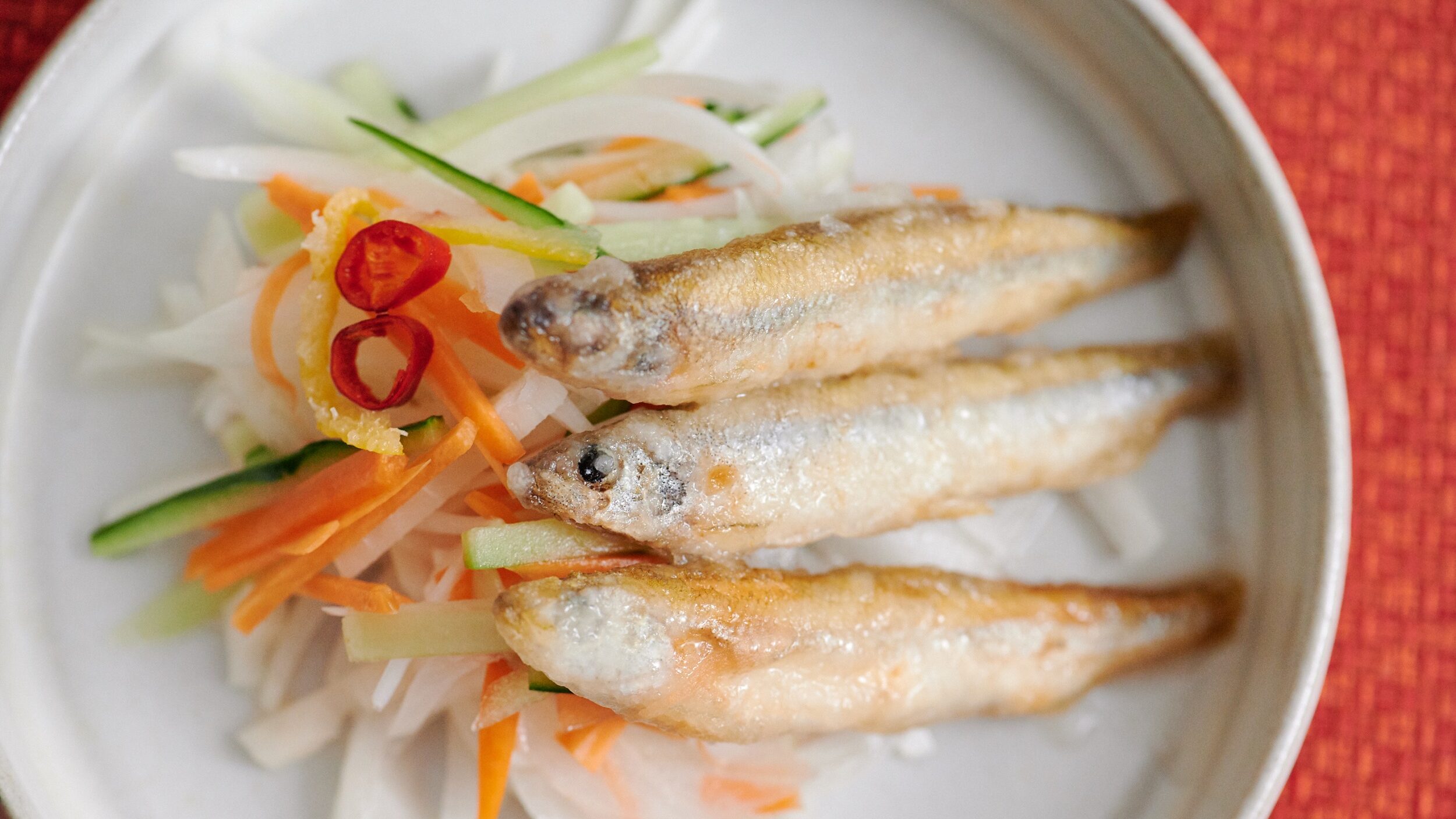
Alright, gather ’round, folks! Let me tell you about a little something special from Ibaraki – a tasty little number called “Wakasagi to Renkon no Suzuke.” It’s a pickled dish featuring two of the prefecture’s local stars: wakasagi (smelt) and renkon (lotus root). Trust me, it’s a delightful mix of textures and flavors!
Dish Name: Wakasagi to Renkon no Suzuke
- Region / Location: Ibaraki Prefecture (throughout the prefecture).
- Primary Area of Tradition: Throughout Ibaraki Prefecture.
- Main Ingredients: Wakasagi (smelt), lotus root (renkon), vinegar, carrot, onion.
How It’s Eaten / Served
To make this delicious dish, the wakasagi are first scaled, rinsed, and patted dry. Then, they get a light coating of potato starch and are fried until crispy. The lotus root is thinly sliced and then pickled along with the freshly fried wakasagi in a sweet vinegar mixture. After letting it sit for a while to allow the flavors to meld, it’s ready to be enjoyed! Some folks like to add a bit of yuzu peel to the sweet vinegar for a refreshing citrusy note. Nowadays, it’s also quite common to find it prepared as “Nanbanzuke,” which uses a sweet vinegar, soy sauce, and chili pepper marinade.
Cultural Background and Preservation
Wakasagi to Renkon no Suzuke is a local dish that proudly features the bounty of Lake Kasumigaura, the second-largest lake in Japan. The area around Lake Kasumigaura, blessed with plenty of water and fertile wetlands, has been cultivating lotus root for a long time and is now known as the top producer in Japan. Lotus root is harvested throughout the year, and it’s fascinating how its texture changes with the seasons. Summer harvests yield a crisp and juicy renkon, while those from winter are more starchy and have a mochi-like chewiness, offering different culinary experiences depending on when it’s harvested.
Wakasagi fishing has also been a long-standing tradition in Lake Kasumigaura. Until the early 1960s, a unique method called “hobikibune” (sail-drawn net fishing) was used. These boats were quite a sight with their enormous white sails, using wind power to pull the fishing nets. Dozens of these white-sailed boats dotting the lake were a signature scene of Kasumigaura. However, this method was dependent on the wind, and the large sails posed a risk of capsizing in strong gusts. Today, fishing is done using mechanical trawlers. Unfortunately, overfishing has become a concern in recent years, leading to a decrease in catches.
Wakasagi are popular because their bones are soft enough to eat whole, making them easy to prepare and enjoy. Since both wakasagi fishing and lotus root harvesting happen from summer to winter, this is the prime time for making Wakasagi to Renkon no Suzuke. Pickling with vinegar helps to preserve the dish, which is why it’s still enjoyed as an everyday part of the local cuisine. And the best part? You can easily find both wakasagi and lotus root at your local supermarket these days, making it a breeze to whip up a batch at home!
Additional information:
- Wakasagi (ワカサギ): Smelt, a small freshwater fish with a delicate flavor and tender bones that can be eaten whole.
- Renkon (れんこん): Lotus root, a crisp and slightly sweet vegetable with distinctive holes, used in a variety of Japanese dishes.
- Nanbanzuke (南蛮漬け): A Japanese dish where fried fish or vegetables are marinated in a sweet and sour sauce, often with chili peppers.
- Hobikibune (帆引き船): Traditional sail-powered fishing boats unique to Lake Kasumigaura, characterized by their large white sails.
The information about regional cuisine featured on this website (Piggy's Grandma of Japan) is summarized and adapted from the Ministry of Agriculture, Forestry and Fisheries of Japan (MAFF) website, "Our Regional Cuisines"Additional commentary is provided based on the unique experiences and perspectives of the site's editors.
The copyright for the original content regarding regional cuisine belongs to the Ministry of Agriculture, Forestry and Fisheries of Japan.
The summaries and adaptations published on this site are intended for informational purposes only. Piggy's Grandma of Japan does not guarantee the accuracy or completeness of this information. For the most accurate and complete details, please refer to the original pages on the MAFF website.


